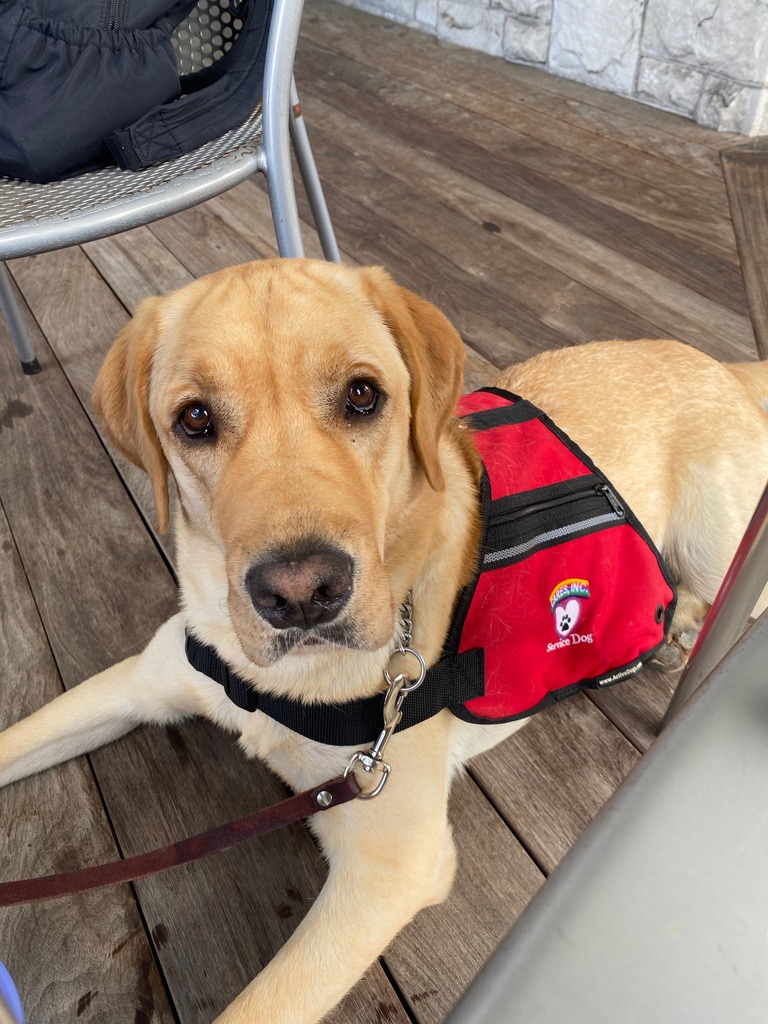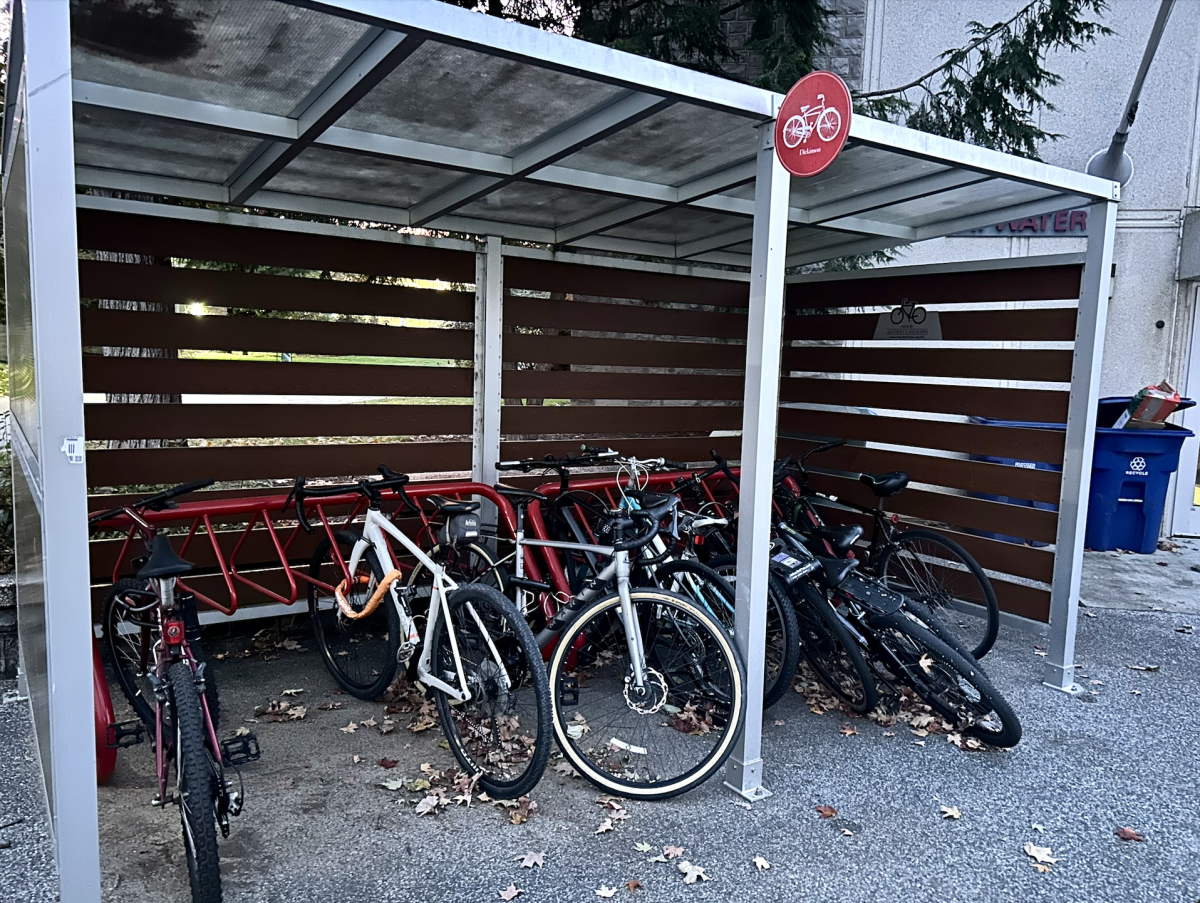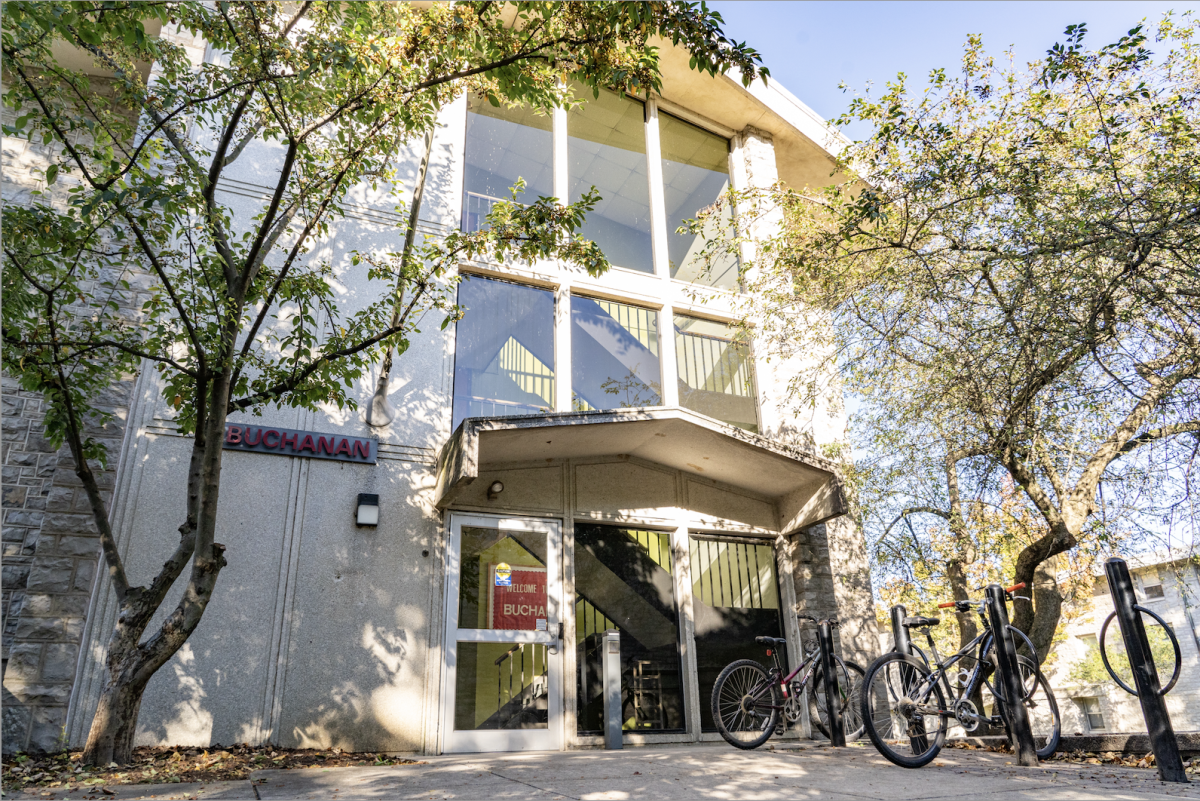When you see a dog, the immediate urge to go over to them, give them some pets and ask their name is prevalent. However, for a certain set of dogs, it is best to keep those reactions controlled, given that they are always working when walking around their respective communities.
Service dogs are specially-trained dogs — not pets — who work to support their handlers with their disability-related challenges. These differ from regular pets, which certain students with accommodations have on campus through Access and Disability Services (ADS).
Currently, there are two service dogs on campus this year, which is the highest number there has been collectively at Dickinson in recent years. Marni Jones, Dean and Executive Director of ADS & SOAR, said that “In the 13 years prior [to this school year], we’ve had just one service dog” each year.
The college’s Animals on Campus policy defines three different types of animals on campus that are permitted on campus with accommodations: service animals, emotional support animals and pets. Students who work with ADS and explain why they need a service or emotional support animal on campus are allowed to do so. These disabilities must qualify under the Americans with Disabilities Act of 1990.
For animals that do not meet service requirements, such as pets or emotional support animals, they are not allowed in “any academic or administrative building on campus or in gated athletic facilities,” and must be leashed on campus property. Meanwhile, emotional support animals are only allowed in the residency of the student who has them.
There are also places where service animals can be restricted as well, which are areas where an animal can pose a risk to the safety of people, other animals or themselves. These places can include food preparation areas, laboratories and classrooms with research animals.
The two service dogs currently on campus both support their handlers with different disabilities. The dog who helps Amelia Rehrman ’25 supports her by being able to alert her if her blood sugar is too high or too low due to her type 1 diabetes, while the dog that supports Cecee Kornreich ’27 makes sure to mitigate her tic disorder.
Rehrman’s service dog is a year and a half old, and has been trained from when he was born. Meanwhile, Kornreich’s service dog is about one-third of the way through his training, and is new to an environment with as many people as a college campus. Despite the time difference in both dogs’ training, Rehrman said “these dogs are always in training,” and that even with her dog being trained longer, she still has to give him a tug on the collar to correct a wrong action he may do. While it may look tough to an outsider, it is the proper way for the dog to learn what it can and can not do.
The dogs that support Rehrman and Kornreich are specially trained for their respective disabilities, but other service dogs will have their own training for different disabilities. There are many different disabilities they can assist with, with some common ones including blindness, epilepsy, Parkinson’s disease and muscular dystrophy.
While the dogs are around to support their handlers, the dogs also need their own support as well. While they are on duty at all times they are out, they do still need ways to be enriched like regular dogs, such as having toys and going for walks. They also need their basic needs met, such as eating and relieving themselves, which both handlers have made sure to adjust around their schedules so it is easy for them and their dogs. When it comes to making sure the dog and herself are well cared for, Kornreich said “it’s a partnership, you both are putting in a lot of work.”
Service dogs also wear vests that can help students identify them around campus. Jones said “No matter how friendly they appear to be, it is never okay to interact with service dogs, since they need to focus all their attention on their handlers.” Even smaller interactions, such as making eye contact or being around another non-service dog, can disrupt their focus and distract them from their handler. Jones said that when wanting to interact with a dog who is not wearing a vest, and thus not a service dog, “you should always ask the owner first.”
From an administrative perspective, Jones said the biggest challenge with service dogs on campus has been to help “well-intentioned individuals” understand the difference between service dogs, emotional support animals and regular pets. Jones said she understands that it is difficult to not be able to touch and greet the animals, “but these actions – along with other distractions like loud noises, whistling, crowds, being looked at intently, and other animals — make it challenging for service dogs to do their work.”
Those who are interested in learning more about service and emotional support animals can reach out to Dickinson’s Access and Disability Services at [email protected] or meet with them in their office, which is located in Old West, lower level (OWLL).














Chevalier Daniel C. Boyer • Oct 16, 2023 at 6:23 pm
Leaving aside the arbitrarily punitive approach of the “Animals on Campus” policy towards dogs, and, in many cases, other animals, with dogs being essentially punished for the mere fact of being a dog, it might be noted that a single dog is not “them;” plural dogs, to which the plural pronoun “them” refers, are not going to have a single name. Is either the single dog (if fluent in English or some human language, in addition to his native Doghese), or his human companion, going to provide a list of names? Does the dog have multiple personalities? No, and no. This is a number disagreement with the pronoun. The sentence should read, “When you see a dog, the immediate urge to go over to him, give him some pets and ask his name is prevalent.” One would have thought that this level of grammar would have been covered in the appropriately-named grammar school.